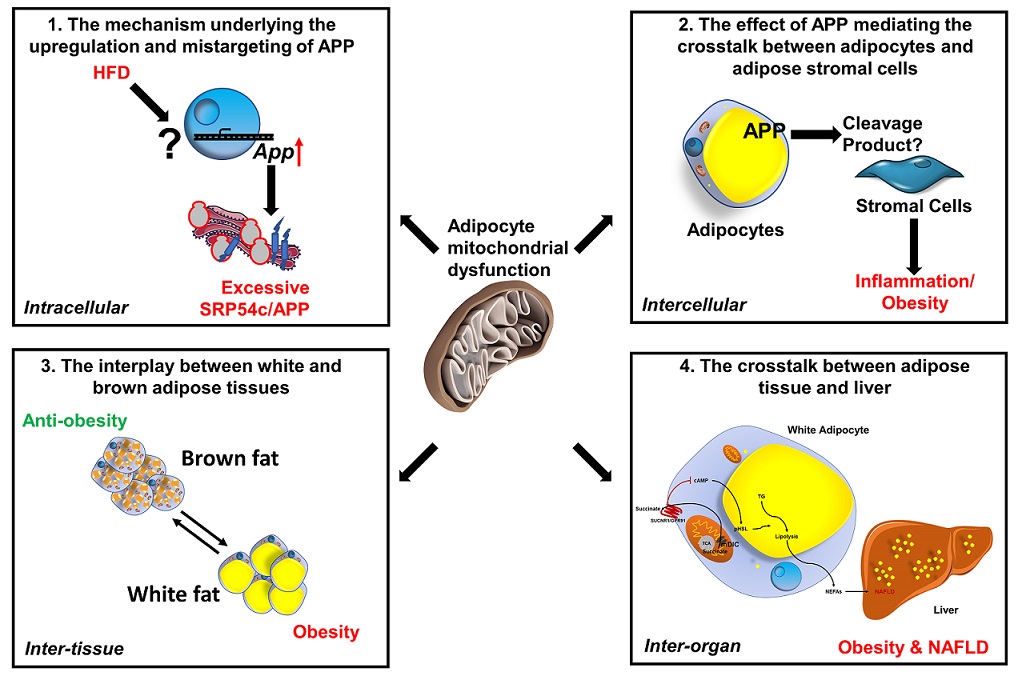Research

Research: Adipose Mitochondria Impact Metabolic Homeostasis
The main theme for Dr. Yu (Aaron) An’s laboratory is “adipose mitochondria impact metabolic homeostasis”. In the United States, more than 42% of adults are living with obesity, according to the Centers for Disease Control and Prevention (CDC), and the rate continues to rise. One of the root causes of heart disease, stroke, Type 2 diabetes, and certain types of cancer, obesity exacts a staggering toll on our communities – more than $147 billion in medical costs and an estimated 300,000 lives per year. Having obesity also significantly increases the chance of severe illness and hospitalization from COVID-19.
Newly founded in September of 2021, the An Laboratory is aiming to carry out paradigm-shifting research in the fields of obesity, diabetes, and metabolism by defining the fundamental mechanism of obesity and bringing treatments fighting obesity and its related metabolic diseases. One of the major lab research programs is to increase our understanding of intercellular and interorgan communication during mitochondrial distress in fat cells (adipocytes), through using molecular and biochemical tools, primarily cultured cells, genetically engineered mouse models, and human adipose tissue samples.
In past few years, we have established several unique mouse models mimicking mitochondrial stress in adipocytes and thereby promoting obesity. Dr. An has been first-authored and co-authored more than 40 papers (see full list in the PubMed link: https://www.ncbi.nlm.nih.gov/myncbi/yu.an.1/bibliography/public/ ) in prestigious journals, including Nature Metabolism, J Hepatology, eLife, Diabetes, Science, Cell Metabolism, JCI, etc. A prospective trainee is expected to utilize established mouse models to perform four levels of studies: to explore intracellular regulation and defensive mechanisms against mitochondrial dysfunction, to identify intercellular crosstalk between adipocytes and adipose stromal cells, to discover inter-tissue communication between white and brown adipose tissue, and finally, to investigate the interorgan crosstalk between adipose tissue and liver and other metabolic organs.